San
Diego Jewish World
Tuesday
Evening, July
24, 2007
Vol. 1, Number
85
|
Archives Event Tracker HOME Jewish Directory Jewish Grapevine Jews in the News News Sleuths Sports |
| PLEASE SUPPORT OUR ADVERTISERS; THEY ARE HELPING TO BRING San Diego Jewish World TO YOU: Anderson Travel Bubbla Packaging Systems I'm There For You Baby radio show In the Know' radio show JCC Maccabi games Jewish American Chamber of Commerce Jewish Community Foundation Journey to the copper age Museum of Man Lecture Series Old Town Trolley Tours of San Diego Seacrest Village Retirement Communities |
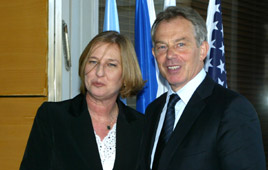
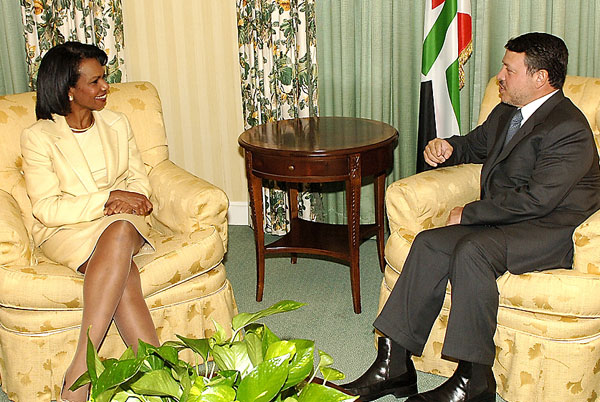
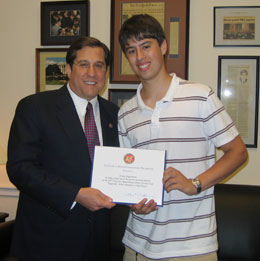
NEWSMAKERS—Left, Israel's Foreign Minister Tzipi Livni
briefed Quartet Envoy Tony Blair on her perceptions
of the Israeli-Palestinian conflict. Center U.S. Secretary of State
Condoleezza Rice met with Jordan's King Abdullah II prior to a White House
dinner in his honor. Right: U.S. Rep. Steve Rothman (Democrat,New Jersey)
honored high school senior Jeremy Feigenbaum for his award-winning essay on the
Holocaust.
Livni-Rice photo by Olivier Fitoassi, Flash 90.
Rice-Abullah photo by Michael Gross
|
San Diego Jewish World—July
24, 2007 |
Rice to visit Egypt, Saudi Arabia, Israel, and PA
WASHINGTON, D.C. (Press Release)—Secretary
of State Condoleezza Rice will travel to the Middle East from July 30 to August
2, 2007. |
|
Livni briefs Blair on Middle Eastern situation
JERUSALEM (Press Release)—Vice Prime Minister and Minister of
Foreign Affairs Tzipi Livni met on Monday, July 23, in Jerusalem with Tony Blair
on his first visit to the region as special envoy of the international Middle
East Quartet.
She said, "We attach great importance to your mission. This is a critical point
in time with an opportunity for change. The path to a Palestinian state must
entail a Palestinian war against terror and the building of a firm foundation
for a responsible state controlled by a government that accepts the conditions
of the international community - a government that can exert control over its
territory and prevent it from posing a threat to Israel."
FM Livni added, "This is in the interest of the entire region and
of all moderates who are faced with the threat of extremism, which assumes
different forms in different places."
She emphasized that while adhering to the distinction between moderates and
extremists, the international community must display determination vis-à-vis
Hamas and not accord it legitimacy, whether directly or indirectly, so long as
it does not uphold the pre-conditions set by the international community.
The preceding was provided by Israel's Ministry of Foreign Affairs
(Return to top)

{Click the above ad for more information}

Wounded vet kvells over son's IDF enlistment
TEL AVIV (Press Release)—Among the soldiers standing at the courtyard of the enlistment office in Tel Hashomer, Tel Aviv, Monday morning, July 23, was Warrant Officer Moshe Aruas. The military has been his profession for many years. Warrant Officer Aruas, his wife, and the members of his family were there to accompany their eldest son, Marom, who was enlisting into the Golani Brigade. The brigade is once again at the top of the list of the most sought after infantry brigades. Maybe this fact is what lead to it being the first brigade to accept soldiers in the August enlistment.
For Aruas, the enlistment of his son is the completion of a personal cycle, and the beginning of a new one. Warrant Officer Aruas was injured approximately twenty years ago, at the beginning of his military career, in an experiment for the development of the Merkava tank. Aruas was declared in critical state as a result of an explosion which occurred during one of the experiments. He lost his left hand, and part of his right hand. Warrant Officer Aruas has an imposing build, but when young Marom becomes part of the crowd entering the bus which will take him to the place where he shall begin the initial enlistment stages, tears began to well up in his eyes.
"It is not easy to send your son to the army," sighs Warrant Officer Aruas. "When I saw pictures from other drafts, and saw the parents crying I felt that it was distant from me. Today it is very close. After I was injured, it took me exactly six months to get back to my military service, because the country is very important to me. I tried to instill that in my children as well, but that does not mean that it was easy. I hope that the army will be a platform from which Marom can have great achievements, either for his civilian life or for a military professional life. It all depends on him. Marom enlisted into a field unit, voluntarily, and I hope that he will fulfill his potential,and I hope that he will go to Officers' School. It all depends on him. It's all in your head. This is coming from a man who is considered 100% handicapped, who does not feel that he is handicapped at all. Because I know- more than everyone- it's all in your head."
His mother, Sigal, joined in the conversation, "I am already beginning to miss him," she says. "The ambiguity of what will happen to Marom, of where he will go- is difficult. Marom is leaving us, and entering the army's responsibility. It will be difficult not to know what he is doing at any given time, whether he is having a good time or not. At the beginning, I told Marom that as far as I was concerned, he would not serve in a combat unit. Later, I realized that that was his dream, and that I simply could not stop him. What do I wish him? To go, and return in peace, that is all."
The commander of the Golani Brigade, Colonel Tamir Yadei also visited the enlistment office in Tel Hashomer, and spoke to the fresh recruits. "The commander of the Brigade was very pleased because the motivation of people to enlist is very high," said the commander of the enlistment office, Lieutenant Colonel Sami Holtzkan. He saw his third August enlistment yesterday. "Despite the hearsay about a lack of motivation to enlist, the Golani enlistment is one whose soldiers are particularly motivated. In fact, their motivation can be described as greater than high. These are people who come here out of their own choice, they know that they are going to work very hard in the years to come, but are prepared for the challenge. Those who are enlisting are the cream of the crop. The Golani Brigade is very family-oriented. There are people who did all in their capacity to enlist specifically into this brigade." (Jump to continuation)

California, Arizona & Nevada
sales positions
|
{Click the above ad for more information}
Radio priest wins backing in his denials of anti-Semitism
WARSAW (Press Release)—Tadeusz Rydzyk, founder and director of the ultra-Catholic ‘Radio Maryja’ station in Poland, has rejected accusations that he is an anti-Semite. The priest’s church superiors have voiced support for the embattled clergyman and said that accusations leveled against him were defamatory. Earlier this month, the ‘Wprost’ news magazine had reported that in a lecture to journalism students, Rydzyk had described Jews as greedy and that he had lambasted Poland’s president Lech Kaczynski for donating land in Warsaw to build a Jewish museum. The comments generated strong rebukes from liberal Catholics in Poland and leading Jewish rights groups abroad.
On Monday, Rydzyk denied the charges of anti-Semitism, and said he "did not intend to offend anybody. I emphasize that I never speak out against people, especially because of their religious affiliation, race, society," he said in a statement, adding: "One cannot say that the actions of ‘Radio Maryja’, mine included, were or are anti-Semitic."
The Rome-based Redemptorist order, to which Rydzyk belongs, voiced support for the controversial priest. In a statement, the order's chief representative in Poland, Zdzislaw Klafka, dismissed the allegations of anti-Semitism and questioned the authenticity of the tapes published by ‘Wprost’. “The Reverend Rydzyk does not identify himself with the anti-Semitism attributed to him, and as fellow clergymen who know him, we know that this is an attitude foreign to him,” Klafka said in the statement, which he said was agreed to by the order's chief in Rome, the superior-general Joseph W. Tobin.
A local prosecutor in Torun, Poland, was reportedly examining the accusations, and his office indicated that he would decide in August whether or not to prosecute Rydzyk for the alleged statements. Last week, former Polish prime minister Tadeusz Mazowiecki and former foreign minister Wladyslaw Bartoszewski led a group of over 700 people who signed an open letter complaining that public statements by Rydzyk had "revealed his contempt" for Jews and his intolerance toward political opponents. Describing the priest's public statements as "contemptible," the letter’s signatories asked Catholic church leaders to take action to curtail the public influence of the Redemptorist priest.
The preceding story was provided by the World Jewish Congress
|
|
Adventures in Cruising
Aboard Holland America
Ryndam
|
WASHINGTON, D.C (Press Release)—Congressman Steve Rothman (Democrat, New Jersey) has congratulated Teaneck resident Jeremy Feigenbaum on being named one of the top ten national finalists in the 2007 Holocaust Remembrance Project essay contest. Feigenbaum’s award-winning essay, “Majdanek: When Humanity Looked Away,” was a powerful essay about the mindset of those who committed and those who permitted the unspeakable horrors of the Holocaust.
Rep. Rothman told Jeremy during a visit to his congressional office July 18 that, “your essay serves as a reminder that the world must never cease its efforts to ensure that such atrocities are not repeated. I am also very proud of your efforts to promote tolerance and acceptance, and the steps you are taking to move, in your words, ‘our world a step farther from the Holocaust.’”
Jeremy is a graduate of the Bergen County Academies and interned in Rothman’s congressional office in Hackensack during the 2006-07 school year. He plans to attend Brown University in the fall where he will study political science. As part of his visit to the nation’s capital, Jeremy met with Holocaust survivors and high school teachers dedicated to teaching about the Shoah, visited the U.S. Holocaust Memorial Museum, and heard from New York Times best selling author Ishmael Beah, author of A Long Way Gone: Memoirs of a Boy Soldier.
This year marks the thirteenth consecutive year that the Holland & Knight Charitable Foundation has sponsored the Holocaust Remembrance Project Essay Contest, created to encourage and promote the study of the Holocaust. Holland & Knight awards the top ten essayists with scholarships up to $10,000 and a six-day, all-expenses-paid trip to Washington, D.C.
Here is a link to Jeremy’s essay.
The preceding story was provided by the office of Congressman Steve Rothman
ADL says its position on Mass
was well-researched
Editor, San Diego Jewish World:
Re: “Mikulanis concludes ADL failed to read initial statement by Benedict XVI” (July 17)
Unfortunately there has been much confusion and misinformation in the media and elsewhere in recent week about the liturgical and theological significance of the recent Motu Proprio, the papal decree on the Latin Mass. This is especially true with regards to what the decree means for the wider usage of a Good Friday Latin prayer to convert Jews.
To be clear: ADL has no position on the Latin Mass itself. Our concern is about the inclusion of the Latin prayer to convert Jews, which is said on Good Friday and is part of the 1962 Missal, or liturgical book.
Therefore, we welcomed last week’s public statement by Vatican Secretary of State Tarcisio Bertone, who helped clarify the situation by acknowledging the possibility of removing the offensive 1962 prayer, which he said, “would resolve all the problems.” As it turned out, Cardinal Bertone’s interpretation is the same as that of ADL: that the Motu Proprio in effect, sanctions wider usage of the 1962 Latin prayer to convert Jews for those using the Latin rite during public worship on Good Friday.
Indeed, if the 1962 Latin prayer had truly been prohibited from use, as the Monsignor Mikulanis and other Catholic leaders mistakenly concluded, Cardinal Bertone would not have needed to make his public statement.
ADL has for several months been working in close consultation with liturgical experts in the Vatican and at the United States Conference of Catholic Bishops. These experts confirmed that the papal decree sanctioned the prayer, and shared their concern with us. In the 1960’s the Second Vatican Council, culminating in the historic Nostra Aetate declaration, repudiated the deicide charge against all Jews, reaffirmed the eternal Covenant between God and the People of Israel, and dismissed church interest in trying to baptize Jews.
ADL looks forward to working with our friends in the Catholic community to ensure the speedy removal of the offensive prayer, in the interests of continuing to deepen and grow the Catholic-Jewish dialogue.
Eric
J. Greenberg
Associate Director
Anti-Defamation League, New York
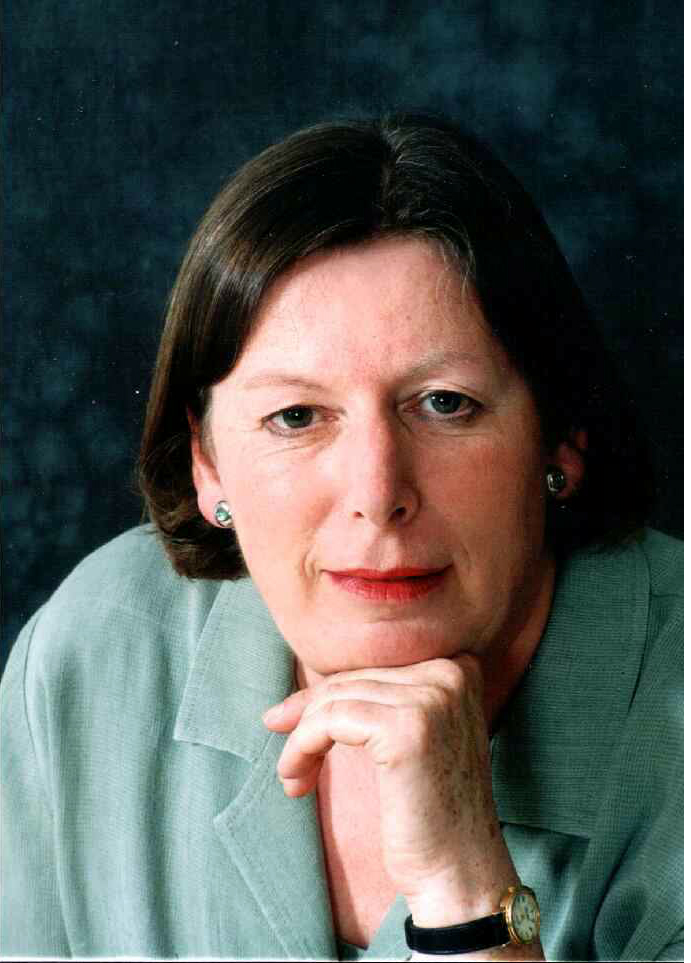 Jerusalem Diaries
Jerusalem DiariesJudy Lash Balint |
Peaceful Tisha B'Av march
recalls national tragedies
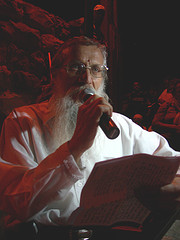
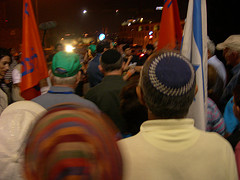
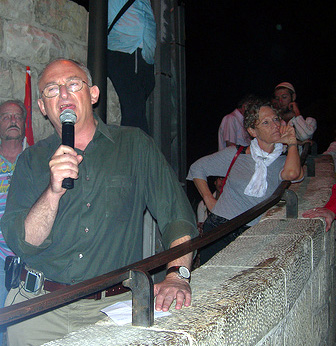
TISHA B'AV MARCH—Rabbi Yosef Mendelevich,
left, and MK Aryeh Eldad addressed the thousands
who marched around the Old City of Jerusalem as part of the annual Tisha B'Av
observance.
Photos by Judy Lash Balint
JERUSALEM—A brisk breeze blows through the concrete canyon created by the
buildings that make up Jerusalem's municipal complex, Safra Square. The wind
ruffles the sackcloth garment of mourning worn by a youngish woman sitting alone
on the hard ground in the middle of the square as Tisha B'Av descends on
Jerusalem.
Along with hundreds of others, she's there to mourn the long litany of national
tragedies that has befallen the Jewish people around this date all through
Jewish history. While Yom Kippur is the day for personal reckoning, Tisha B'Av
is the occasion for some national soul-searching over what led to our various
ancient and recent disasters.
As we sit waiting for the start of the recitation of Eichah, the mournful
lament for his people penned by the prophet Jeremiah, a friend reminds me that
we spent last Tisha B'Av together at Mt. Herzl attending the heartrending
funeral of IDF soldier Michael Levin z"tl, a young American immigrant
killed in the Hizbollah war.
There were civilian casualties too last Tisha B'Av. Five people were killed by
rockets fired into Israeli towns that day. Shimon Zribi, his 15-year-old
daughter Mazal, Albert Ben-Abu, and Aryeh and Tiran Tamam all perished in Akko
last Tisha B'av.
At this year's march around the Old City walls, Knesset member Aryeh Eldad and
Rabbi Yosef Mendelevich, the former Soviet Prisoner of Zion, both drive home the
message that last year's war as well as the previous summer's tragic expulsion
of Jews from Gush Katif, both resulted from weakness. MK Eldad told marchers
that the people are stronger than the leaders and expressed confidence that we
could "turn the wheel back."
Mendelevich, one of Israel's most unsung heroes, explained that he felt
compelled to say Kaddish at this spot just outside the Temple Mount "for the
heroes who fell here." He turned to face the site of the Temple and the
thousands of marchers who had listened quietly to his stirring talk rose behind
him to gaze up at Lions Gate and join in the response to his passionate
rendition of the ancient words of praise and hope.
Last night, more than ten thousand took part in the revival of the tradition of
walking around the walls of the Old City on Tisha B'Av that has captured the
attention of growing numbers of Jerusalemites in recent years. It's difficult to
estimate the crowds, but it took the better part of half an hour for the masses
to move out of Safra Square at the beginning of Jaffa Road and set off on their
way after the public reading of Eichah.
This year marked the 13th anniversary of the revival of the custom, initiated by
the Women In Green organization headed by Nadia and Ruth Matar.
(Jump to
continuation)
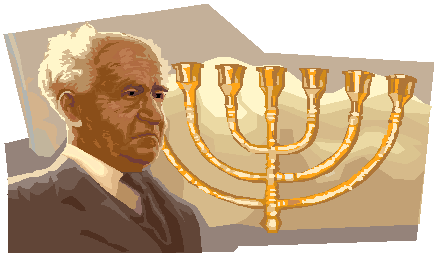 Jews
in the News Jews
in the News
-------------------------------------------------------------------------------------------------------- Like you, we're pleased when members of our community are praiseworthy, and are disappointed when they are blameworthy. Whether it's good news or bad news, we'll try to keep track of what's being said in general media about our fellow Jews. Our news spotters are Dan Brin in Los Angeles, Donald H. Harrison in San Diego, and you. Wherever you are, if you see a story of interest, please send a summary and link to us at sdheritage@cox.net and we'll acknowledge your tip at the end of the column. To see a source story click on the link within the respective paragraph. |
*Joshua Bolten, White House
chief of staff, and former White House counsel Harriet Miers will
be subjects of votes by the House Judiciary Committee on Wednesday
on whether they should be cited for contempt for refusing to testify
before the committee, and instead invoking the doctrine of "executive
privilege." The
story from combined news services is in today's San Diego
Union-Tribune.
*Ronen and Elisheva Goldman,
recent immigrants to Israel, have been volunteering in bomb-shocked
Sderot. In an
article written for Y-Net news, Ronen tells of painting a bomb
shelter.
*Carrots from the Hevel Maon cooperative in the western Negev are
becoming familiar to produce shoppers in the supermarkets of Moscow and
St. Petersburg. The IEICI
story was published today on Y-Net News.
*A Qassam rocket landed Monday on a house in Kibbutz Karniya near Ashkelon slightly wounding a baby with shrapnel and putting two adults in shock. The attack, launched by an arm of Hamas from Gaza, is reported by Shmulik Hadad in a story on today's Y-Net News.
*The Phil Spector murder
trial continued with a defense witness saying the blood spatter pattern
at the record producer's home was consistent with shooting victim Lana
Clarkson having killed herself rather than having been shot. The
story by Dan Laidman of the Copley News Service is in today's San
Diego Union-Tribune.
*New York Gov. Elliot Spitzer apologized for the action of
aides who allegedly leaked information to the news media concerning
flights the Republican leader of the State Senate, Joseph Bruno.
New York Attorney General Andrew Cuomo issued a report criticizing the
tactics of the aides but said he found that neither Bruno nor Spitzer
had broken any laws. The Associated Press
story by Michel Gormley is in today's San Diego Union-Tribune.
(Return to top)
|
|
Date: July 24, 2007
Time: 12:36 Washington DC time
Place: U.S. State Department
Spokesperson:
Sean McCormack,
spokesperson for Sec'y of State Condoleezza Rice
Source: State Department transcript
Subject: Mideast diplomacy
MR. MCCORMACK: Good afternoon, everybody. I have a couple of travel announcements for you -- one involving the Secretary, one involving the Deputy Secretary.
The first one: Secretary Rice travel to the Middle East. Secretary of State Condoleezza Rice will travel to the Middle East from July 30th to August 2nd, 2007. During her stops in Sharm el-Sheikh, Egypt and Jeddah, Saudi Arabia she will be accompanied by Secretary of Defense Robert Gates; the two will meet with their counterparts to discuss the ways in which Iraq's neighbors can help advance the cause of security and stability in that country. While in Sharm el-Sheikh, Secretary Rice will meet with the Foreign Ministers of the Gulf Cooperation Council countries, Egypt and Jordan to consult on regional issues. Secretary Rice will then travel separately to Jerusalem and Ramallah for meetings with Israeli and Palestinian officials where they'll continue discussions on the development of a political horizon.
And the second I have for you is Deputy Secretary of State Negroponte to lead U.S. delegation to the ASEAN meetings.....
QUESTION: Is it merely a (Middle East) trip for preparing the conference you want to organize in the fall or is it a trip where she expect to reach any special achievement? Do you have any precise goal to be this trip?
MR. MCCORMACK: Well, she's going to talk about a whole bundle of issues related to the Middle East. She's going to obviously touch on the meeting that the President announced will be held in the fall time about moving forward the political track between the Israelis and the Palestinians and we hope between the Israelis and the Arab states. So that's going to be one set of issues.
She's going to talk to Prime Minister Olmert and President Abbas about how they can move forward their political track, where they stand in their discussions and how we can help them move forward. She's going to be talking with both Egypt and Saudi leaders in conjunction with Secretary of Defense Gates specifically on issues related to Iraq and how Iraq's neighbors can support that country, support the Iraqi people and be active participants in helping the Iraqis build a better future. I expect they will also touch on Israeli-Palestinian issues, Israeli-Arab issues, and I'm sure that they will probably also touch upon this meeting that is planned for the fall time. In the Gulf Cooperation Council meeting with Egypt and Jordan, I would expect that all of the above are going to be topics for discussion.
Yeah.
QUESTION:
There is no special objective, precise objective she wants to achieve?
(Jump to continuation)
________________________

Click the ad above to go to the "I'm there for you baby" website
The Jewish Grapevine

|
BELL-RINGER—
San Diego Union-Tribune columnist Diane Bell reports that Fred Lewis, who has been ailing with prostate cancer, interviewed 653 San Diegans for his "Heart of San Diego Show." For his 654th and final show, he and his wife Jenny talked about their lives in San Diego. The show will be aired at 5 p.m. August 12, on ITV Cable.CYBER-REFERRALS—
Jay Jacobson passes along an article by Richard Baehr in American Thinker explaining the difference between liberals and leftists and why the latter hate Israel. He also sent an analysis by HonestReporting of the anti-Israel bias of the BBC based on a six month study.IN MEMORY—Some members of the Jewish community whose obituaries appear in the news and paid columns of today's San Diego Union-Tribune include Rose Schneider, 83, of Encinitas, who died July 22; Sylvia Rose "Rosie" Blackman, 82, of Murrieta, who died July 21, and Dwain Stanley Cantor, 82, of San Diego, who died July 9. The listing for Kantor said that he had served as an Army Air Force gunner during World War II and was shot down over Germany about two months before the end of the war. He was a POW until April 29 when he was liberated. A former student president at San Diego State University, he played piano in a swing band, developed a successful commercial real estate business focusing on properties in the Hillcrest area of San Diego, and in 1954 became president of the SDSU Alumni Association. Kantor also taught real estate classes at UCSD.
ISRAEL NEWS SUMMARY—The European Jewish Congress, in its
summary
of the news appearing in Hebrew-language newspapers, reported that they
emphasized the possibility of a general public sector strike following
the breakdown of discussions between Histadrut Chairman
Ofer Eini
and Finance Minister
Roni Bar-On.
Eini complained that Bar-On's latest offer for a wage increase amounted
to not much more than buying every worker "two felafels." Other
stories focused on confirmation by Israel that Hezbollah in Lebanon has
restored its missile arsenal, as well as reports about Quartet Envoy
Tony Blair's first day in the region on Monday...
Museum of Man schedules 7
Sunday lectures
probing the mysteries of Copper Age humanity
SAN DIEGO (Press Release)— The Museum of Man has scheduled a Sunday
lecture series by well-known scholars on the Chalcolithic Period
(Copper Age) in conjunction with its exhibit Journey to the Copper
Age: Archaeology in the Holy Land. Following each lecture, there
will be an expert-led tour of the exhibit
Tickets for individual lectures cost $20 for members of the general
public, or $10 for Museum of Man members, seniors, and military. Each
lecture is limited to 60 attendees. Series tickets are $100 for seven
lectures and $80 for five lectures for general public, while for Museum
members, students (w/ ID), seniors and military, the fee is seven
lectures for $50, five lectures for $40. Call (619) 239-2001 to reserve
space, or visit the website:
www.museumofman.org
Here is the schedule:
July 29—
Margie M. Burton, Ph.D., Collapse at the End of the Copper Age, 3- 4:30
p.m. in the Gill Auditorium, with a Gallery Tour of Journey to the
Copper Age with Dr. Burton, at 4:30 p.m.
The Copper Age in the southern Levant witnessed settlement expansion into new areas and dramatic technological and social development. However, many of the large villages that were established and flourished during the late 5th millennium and into the first centuries of the 4th millennium were abandoned by ca. 3700 BCE and never reoccupied. Artistry and craftsmanship in most media, including copper, declined. In short, society collapsed. This presentation will introduce the concept of social collapse and will explain how archaeological evidence helps us to understand why the Copper Age came to an end.
Dr. Burton has undergraduate degrees from Stanford University and
received her Ph.D. from the University of California, at San Diego,
with concentration in anthropological archaeology. Dr. Burton is
research director of the San Diego Archaeological Center, and has
participated in archaeological field work in Israel and San Diego
County. She has published on tracking prehistoric social change through
ceramic analysis, and has published with Dr. Thomas Levy on the
Sanctuary at Gilat, Israel.
(Jump
to continuation)
(Return to top)

{Click the above ad for more information}
SAN DIEGO (Press Release)—This summer,
two programs of Jewish Family Service of San Diego (JFS) are starting up
new support groups. One is for cancer patients and their families. The
other is for couples going through separation and divorce.
Caring Community—Living with Cancer is beginning a support group for
family, friends and caregivers of people living with cancer. Through
the group, members learn how to best support their loved ones, while
taking care of themselves.
The group will meet in Encinitas on Mondays from 4:30-6:30pm. Similar
groups meet already on Tuesdays in National City, Wednesdays in Mission
Valley, and Thursdays in La Mesa. Caring Community—Living with Cancer
is continuously improving quality of lives and assisting in the healing
process for people living with cancer and their loved ones. For more
information about the program or support groups call (619) 682-2663 or
visit
www.jfssd.org. Advanced registration is required for all weekly
support groups.
The Separation and Divorce Support Group
of Counseling Services is for both men and women at all stages of the
separation or divorce process. Participants are given an opportunity to
meet with other people experiencing the same major life change. The
group will provide a structure to deal with feelings such as grief,
loss, disappointment and anger that often go along with separation or
divorce.
The Kearny Mesa groups meets on Monday evenings at the Turk Family
Center at 8804 Balboa Ave. The North County Coastal group meets on
Tuesday evenings at the Jewish Family Service office in Encinitas.
Groups are $20 per session, with a $20 pre-enrollment assessment. For
more information or to set up an assessment appointment, call (877)
537-1818.
Counseling Services at Jewish Family Service offers fully trained counselors for both daytime and evening appointments. Services are offered on a sliding fee scale based on ability to pay and most insurance is accepted. Jewish Family Service is open to the entire community, regardless of religious affiliation. For more information about Counseling Services contact (877) 537-1818 or visit www.jfssd.org.
The preceding story was provided by Jewish Family Service
(Return to top)

{Click the above ad for more
information}
 The Jewish Sports Fan
The Jewish Sports Fan
 |
Unless otherwise indicated, source for these stories is today's edition of
The San Diego Union-Tribune, to which we gratefully provide the links below.
We do not apply halacha to determine if a player is Jewish; rather, if he or
she has a Jewish parent or has converted to the faith, we count him or her
as a member of our community.
BASEBALL—Most Jewish baseball players rode the bench Monday, but we think it was coincidence rather than the approach of Tisha B'Av. One player who did play, and very well for that matter, was Kevin Youkilis, who batted 2 for 4, during the Red Sox' 6-2 victory over the Cleveland Indians. Youkilis scored one run and knocked in his 48th RBI, while helping defensively to turn two double plays. His batting average now is .312.
{Click the above ad for
more information}

{Marc Kligman, who combines being a sports agent with his life as an observant Jew, invites you to listen. Click on the ad above for more information}
|
Rotary and San Diego Youth Symphony program fosters SAN DIEGO—When my husband Hal and I met Rachel Libman, a 17-year- old cellist from Kiryat Yam, Israel, we felt an immediate affinity for this lovely young girl. Rachel was in San Diego, participating in the San Diego Youth Symphony and RotaryInternational MusiCamp Youth Exchange. She was staying with our daughter Myla’s family and was already a welcome member of the "mishpoche." She played cello duets with Myla’s husband Dr. Lou Rosen and served as a big sister to 8-year old Adira. A slim |
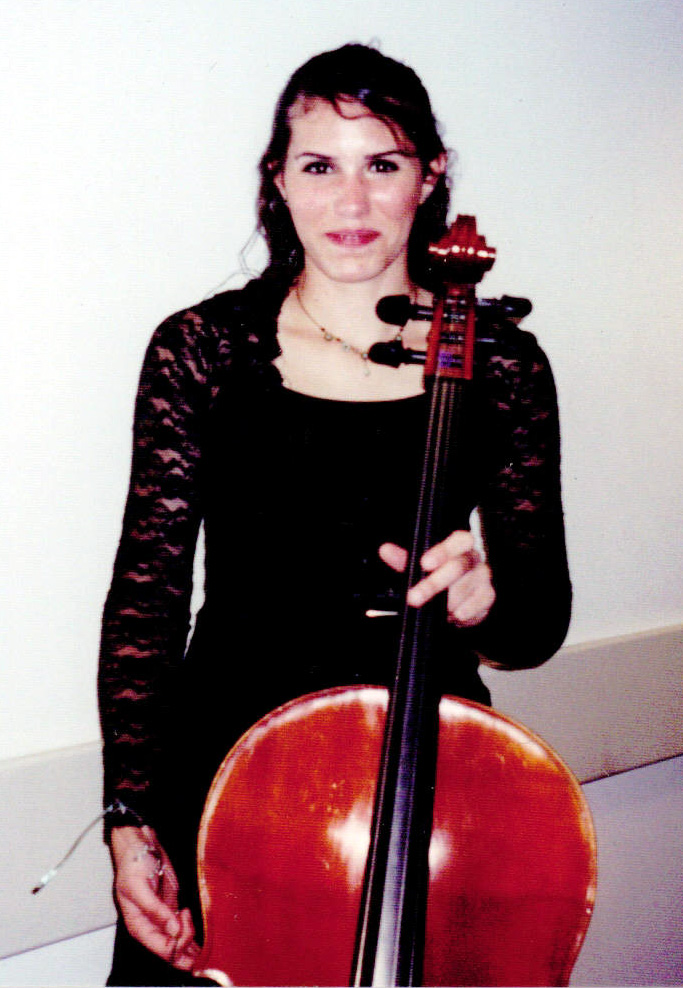 |
beauty
with black wavy hair and sparkling dark eyes, Rachel not only was sweet,
Our first encounter with Rachel was a Shabbat dinner at our daughter’s home. Myla, Rachel and I played chamber music before sundown. Because Rachel is shomer Shabbat, we scheduled our music making prior to the Shabbat meal. As we rehearsed, Myla and Rachel discussed the music in rapid Hebrew. I haltingly chimed in now and then.
In between Myla’s delicious matzo ball soup and the salmon entrée (fish caught my grandson Eitan), we learned that Rachel’s mother was from Morocco and her father from Rumania. Her older brother Yossi just finished his army service and Rachel completed high school last month. She has not yet decided whether to go into the army or do national service for the next two years. Although the talented girl loves playing cello, she may opt for law as her ultimate professional goal.
The three week MusiCamp, sponsored by the San Diego Youth Symphony in partnership with the Rotary International District 5340, is under the direction of Jeff Edmons, artistic director of the San Diego Youth Symphony. This is the third summer that members of the orchestra combine with fifteen young instrumentalists from around the world, brought to San Diego by the Rotary International. Coordinator of logistics for the fifteen international musicians was Bill Sturgeon, past district governor of the Rotary International District 5340.
When Myla met this gentleman after her recent performance for the "Advocates
for Classical Music," she responded to his request to host a young Israeli musician.
Sturgeon recruited families such as Myla’s to house the internationalvisitors and transport them to rehearsals and social events. This year, students also came from France, Germany, Holland, Italy, Mexico, Slovakia, Spain and Turkey.
As Rachel’s adopted grandmother, I was privileged to attend, with Myla’s family, a recital in the beautiful Rancho Santa Fe home of Rebeca and Walter Hickel. Seven of the foreign students were featured on the program. They all played exceptionally well. I was particularly impressed by the high level of artistry of Katharina Groll, a nineteen-year-old bassoonist from Cologne,
Germany.
The following Sunday, I attended the orchestra concert held in the Theater of the California Center for the Arts, Escondido. The audience was packed with parents, hosts and friends. There was our Rachel, sitting in the cello section, outside, second stand.
During two weeks of intensive rehearsals, Artistic Director Jeff Edmons developed a professionally sounding ensemble. Mozart’s Overture to The Marriage of Figaro received a brisk, spirited reading, the Serenade for Winds by Strauss was nicely executed by the woodwinds, and Bela Batok’s Rumanian Folk Dances featured solo work by various principal players, including a lovely lyrical passage by Concertmaster Michael Viscardi. After intermission, the orchestra performed Beethoven’s Symphony #8 with remarkable flare and precision. Particularly impressive were the sudden dynamic contrasts, so typical of Beethoven.
Myla and her family could not attend the orchestra concert because they needed to travel to the Brandeis-Bardin campus of the American Jewish University that morning. Myla’s husband, Lou, is serving for two weeks as camp doctor. However, in their stead, three loyal family friends attended, Terry Miller, armed with flowers for Rachel, Michal Shafir and Dr. Karla Grosmann.
Backstage to say farewell to Rachel, we watched as she interacted with her new friends, one from Turkey, the other from Germany. We shared Bill Sturgeon’s hope that: "The participants return with a broader view of the world and a deeper understanding of themselves. With the added dimension of music, the exchange experience becomes an even more powerful force in the promotion of world understanding, friendship and peace."
(Return to top)
(Continued from above)
Why go to Golani? Because of the people, because of the atmosphere-mostly because of the people," concludes the new draftee, Marom Aruas. "Look at their happiness before enlistment, these people have not even spent an hour together, and are already singing and dancing together. You won't see that anywhere else, there is nothing like the Golani Brigade."
The Golani Brigade is made up of a number of units, with each having its own operational character and vocation. In each one of the units the unit pride is great, and they all see belonging to their unit as an honor. The brigade was established on the 2nd of February, 1948, as the first brigade of the IDF, and was known as The First Brigade. The brigade had four battalions which were responsible for different action arenas, and their names began according to the order of the Hebrew alphabet. "Alon" "Barak" "Gidon", and "Dror". The battalion number was given to each battalion by the number of the brigade, and its place in the battalions (11, 12, 13, 14-respectively). Throughout the years, many changes have taken place in the structure of the IDF, and as a result of these changes, the brigade changed as well. After these changes came to a conclusion, in 1956 -the days before the Sinai Campaign- the Givati Brigade (the 5th Brigade) became a reservist brigade, and its first battalion (the 51st-"The Breachers") was transferred to the Golani Brigade. Since then, the structure of the brigade has remained the same.
The combat soldiers of the brigade undergo training which takes place over 10 months, where they learn the basics for functioning on a battlefield. Their training has many aspects, and when the soldier completes it, he joins the rest of the combat soldiers in a battalion of seasoned soldiers. There, professionalism, tradition, and war spirit are the guiding light for everyday operations. The soldiers of the brigade excel and are known for their war spirit, and their dedication to their mission in every possible condition.
Service in the brigade is characterized by a great amount of effort to maintain the upkeep of combat readiness. This can be seen through the periods of operations which are interspersed with training periods, every few months. The deployment of the battalions is not set, and one of their defining characteristics is their ability to acclimatize quickly to different types of living conditions, and various operations, in all action arenas and training areas.
In the past two years, the battalions of the brigade have been an essential force in the combat in the Territories associated with the Second Intifada. They took part in the "Defensive Shield" and "Determined Path" operations, as well as general security operations. In that period, the battalions fought in all of the Western Sector ( Hebron, Ramallah, Nablus, Tulkarm, Jenin, and in various villages) with impressive operational achievements. Additionally, the brigade played an essential part in the Second Lebanon War. Today, the battalions are in the action areas of the Gaza Strip, Judea and Samaria, and at the border in the north of the country, and continue their operational actions.
Tisha B'Av March...
(Continued from above)
Tisha B'Av is the one day of the year when Jewish prayers are broadcast over a public address system, in contrast to the daily call to prayer blasted out five times a day over amplification systems from mosques in eastern Jerusalem. It's actually a little disorienting to hear the Hebrew of Eichah amplified over the main city square.
As the marchers move off following a huge banner proclaiming a slogan of allegiance to Jerusalem, organizer Nadia Matar reminds the crowd that this is not a demonstration or a rally, nor is it a social event. In fact, no reminder is necessary, as the restrained mass of Jews soberly sets out to encircle the gates of the Holy City.
Scattered amongst the marchers are a significant number of non-observant Israelis. Women wearing pants walk side by side with others whose hair is carefully covered with a scarf or hat.
There are wheelchair "marchers" and a number of octogenarian walkers, some supported by younger relatives, who manage to reach the end of the hour-long route.
As we pass New Gate, the main entry to the Christian Quarter, we see that all traffic on Route #1 (the main north/south gateway through the city) has been redirected as we take over the streets and pour down the road toward Damascus Gate. Spotlights and snipers are dotted on the rooftops and although most of the Arab stores are shuttered tight, soldiers keep a tight watch over several dozen Arabs who watch us march by as we pass Saleh el Din Street, the main commercial avenue of eastern Jerusalem. Border police hold back a few dozen Arabs coming out of Herod’s Gate as we stream past.
Walking down the hill toward Damascus Gate we turn to look back at those behind us. People as far back as we can see.
The march is a hands-on outdoor classroom for many parents. All along the way, fathers are explaining the significant sites to sons and daughters. "Saba (grandpa) fought here," one tall, bearded man tells his 10 year old son as we round the corner towards Lions Gate, where Israeli paratroopers entered to liberate the Temple Mount in the 1967 Six Day War.
"Look over there," says a young mother to her wide-eyed daughter. "You can see the stairs where the Jews used to go up to the Temple," she says as we walk up the hill in front of the southern wall.
In front of us we see the Mount of Olives crowned with its Arab and Christian institutions. There's a refreshing feeling of freedom as thousands walk freely down the road that overlooks the oldest Jewish cemetery in the world.
Many marchers wander over to the wall to gaze at the Kidron Valley below with Absalom’s Tomb and the monument to the prophet Zechariah. Across the valley we can see the Maale Hazeitim development that acts as a buffer between Abu Dis and the Temple Mount.
Rounding the corner, we look up at the imposing Southern Wall of the Temple with the steps and Huldah’s Gate, before making the ascent towards Dung Gate and the entrance to the Western Wall. Glancing backwards again, the sight of the crowds of people still behind us is awesome. Quiet and dignified, the march has gone off without incident.
Getting out of the area proves challenging, as the Egged bus company lays on dozens of buses to get people in and out of the Old City, causing their own traffic jams.
Close to midnight the road leading to Zion and Dung gates is still blocked by a line of the green Egged buses packed to overflowing with the faithful who will spend the night sitting or lying on the ground at the site of the catastrophe that gave us Tisha B'Av.
At 1 a.m. I see the young woman in sackcloth stretching out on a concrete ledge inside the tunnel that links the Kotel plaza to the Moslem Quarter. She's no longer alone.
(Return to top)
News Sleuths...
(Continued from above)
MR. MCCORMACK: Well, all of this -- you know, all of this, all of these engagements, all of these trips, all of these meetings, all of these discussions with these leaders are to talk about concrete ways in which they can act to move the process forward. Ultimately, this will come down to Palestinians, Israelis and Arab leaders making tough decisions about how to bring about a more peaceful Middle East. We're going to be right there with them. We're going to be pushing. We're going to be prodding, cajoling, encouraging and doing what we can to move that process forward and all of these meetings are part of that process.
Yeah.
QUESTION: Sean, is the Secretary of State having a trilateral with Abbas-Olmert to herself or is she going to meet, you know, separately with them?
MR. MCCORMACK: Let me check with her. I'll talk to her, see what her plans are. That is something certainly in terms of trilateral meetings from time to time I expect that she is going to do. She did one several months ago. I can't remember exactly when. Don't have the date here. During that period of time, President Abbas and Prime Minister Olmert have met. We wanted some of those meetings to take place, so I'll talk to her and see if whether or not now is the right time for one of those trilateral meetings.
QUESTION: What would the purpose be of a trilateral?
MR. MCCORMACK: Well, that's why I have to talk to her about it, Sue, to see if she thinks that now is the right time to bring them together. I can't tell you that it will be.
QUESTION: And what overall is the purpose of -- is this just -- just to see where you are in terms of pushing the process forward? Are you going to be going with anything specific?
MR. MCCORMACK: Yeah, well, anytime the Secretary travels and has meetings, she goes in there with a specific purpose. I can assure you every single meeting that she has, she thinks about what she wants to achieve in those meetings and how that fits into a larger goal. Now it's not always readily apparent in terms of generating news headlines, but when you go back and draw the history of this, you can see how putting in place little building blocks or little steps adds up to some larger goal. So she's going to be going there, certainly, with specifics that she wants to engage with both the Israelis and the Palestinians on, as well as in all the other meetings. And to the extent she is ready to talk about those after the meetings and about what she thinks we have achieved, we'll all learn when we're on the road.
QUESTION: But she's not going there to talk about, sort of, final status issues or anything like that?
MR. MCCORMACK: Hey, she's going to go there to talk about how to move forward the political track. President Bush talked about this in his speech and I think he outlined very clearly where we are and how we want to push the process forward. He outlined that vision in conjunction with Secretary Rice. They talked a lot about that speech. It's a shared vision between the President and the Secretary in terms of moving this political process forward and we'll see, when she's on the road, how much she wants to talk to you guys about what specifically she has talked about with her counterparts.
QUESTION: So is she also going to be looking at specifics for the conference at the -- in the fall of the meeting or where it's going to be?
MR. MCCORMACK: That's where all of this is, in part, leading. I think she can talk about it in general terms. I don't know if she has any more specifics at this point that she will be talking to them about, but that's, in part, where this is headed. The meeting is a mechanism through which we can all try to move forward a political track.
>>
QUESTION: And just on the meeting in the fall and her trip with Gates, are there GCC countries that you would like to see participate in the conference?
MR. MCCORMACK: We've talked about the fact that we'd like to have very widespread participation in this meeting. And the President outlined the criteria that we think are reasonable for states to abide by if they want to attend this meeting. We're going to talk to them. We have a whole different -- you know, one of the common misconceptions about interactions between Israel and Arab states is that there is a -- there's actually a wide spectrum of interactions between Israel and Arab states. It goes all the way from full, normalized, in-public diplomatic relations -- you know, Egypt and Jordan are two examples, two examples of that.
You have other countries that talk about their interactions with the Israelis, but they don't really do so in a very high profile way. And then there are states that have no interactions whatsoever with the Israeli Government. So we'll see over the coming months. We want to try to encourage as many states as possible to buy in to this political mechanism. It's going to be critically important for not only Israelis but also for Palestinians that they have the support of states in the region, Arab states, as they move forward and try to make some very difficult political decisions for both populations.
QUESTION: So is she going with embossed invitations or anything like that?
MR. MCCORMACK: (Laughter.) We haven't printed up the invitations yet.
(Return to top)
Copper Age lecture series...
(Continued from above)
August 12— Sarah Whitcher Kansa, Ph. D.,What's Cooking? - Eating and Drinking in the Copper Age, 3-4 p.m. in the Gill Auditorium, with Gallery tour led by Dr. Kansa following at 4:30 p.m.
Dr. Kansa is a zooarchaeologist who has studied animal bones recovered from the Chalcolithic site in Shiqmim. Her research explores archaeological sites in the Levant and Turkey in periods spanning the relationship between developments in social complexity and animal exploitation. For this program, she will discuss the role of animals in diet, economy, and religion 6000 years ago.
Kansa will also present a "hands on" session with real archaeological bones to show how zooarchaeologists find bones and how bones can tell the age, sex, health, and how the animal was used (Was this animal used for milking or pulling heavy loads?) during the Natufian through the Nabatean periods with dates ranging from 10,000 BCE - 300 CE.
Kansa was a member of the 1993 excavation team led by Prof. Thomas Levy (UCSD) at the Chalcolithic site of Shiqmim in modern-day Israel, and analyzed the faunal remains recovered during that season as part of her graduate research. Her current research at a large 7000-year-old village site in southern Turkey explores ritual and economic uses of animals at the end of the Neolithic Period.
September 23— Steve Rosen, Ph.D., The Rise of Desert Cult: The Sacred Precinct at Ramat Saharonim, Central Negev, 3-4 :30 p.m. with gallery tour following.
The earliest archaeological evidence for elaborate shrines reflecting public ritual and cult in the southern Levantine deserts 7000 years ago coincides with the adoption of herd animals as the people of the late Neolithic through the Early Bronze Age moved from hunting-gathering to pastoral nomadic lifestyles. Survey and excavation at the desert shrine complex at Ramat Saharonim, in the Central Negev, revealed four courtyard shrines and thirty burial cairns. The shrines are aligned with the setting sun of the summer solstice, tying them circumstantially to death symbolism, suggesting a mortuary cult.
Rosen, professor of archaeology at Ben-Gurion University, will discuss the interplay and interdependence of subsistence, symbol, and social structure. Rosen received his Ph.D. in anthropology from the University of Chicago and worked for eight years as a field archaeologist for the Archaeological Survey of Israel—Negev Emergency Survey, where he developed his taste for desert archaeology. Other research interests include Levantine prehistory and stone tool analysis. He is currently serving as the editor of the Journal of the Israel Prehistoric Society.
November 4 — Arlene Rosen, Ph.D., Living in the Desert as a Chalcolithic Farmer, 4-4:30 p.m. in the Gill Auditorium followed by a gallery tour with Dr. Rosen.
There is a popular notion that early village farmers living on the margins of the Negev Desert were at the mercy of a fickle environment which dealt out droughts versus abundant rainfall in seemingly random yearly intervals. We now know that Chalcolithic farmers had very sophisticated strategies for living securely in a marginal farming environment, and were able to make a good and secure living in that locality. This lecture explores some of the evidence for the climatic changes that impacted Chalcolithic farmers, the ancient farming strategies they used to adapt to them, and how this might be relevant to modern farmers within a context of impending global warming.
Rosen obtained a PhD in anthropology from the University of Chicago in 1985. She is currently a Reader in Environmental Archaeology at the Institute of Archaeology, University College London. She has participated in archaeological fieldwork in Central America, Europe, Africa, the Levant, Central Asia, and East Asia. Her primary research interests include human relationships with their environments, the impact of climate change on human societies, and the development of agricultural systems in the proto-historic Near East, Central Asia, and Neolithic to Bronze Age China. Rosen’s publications include Civilizing Climate: Social Responses to Climate Change in the Ancient Near East (2007), Altamira Press, and Cities of Clay: The Geoarchaeology of Tells (1986) Univ. of Chicago Press.
November 11 — Osnat Misch-Brandl, Religious Rituals in the Chalcolithic Period, 3-4:30 p.m. in the Gill Auditorium, followed by a gallery tour.
Osnat Misch-Brandl received her BA in Archaeology and History and her MA in Biblical and Classic Archaeology from The Hebrew University of Jerusalem. She has participated in excavations with The Hebrew University of Jerusalem in Cyprus and Israel. She currently is the Curator of Chalcolithic and Canaanite Periods for The Israel Museum, Jerusalem.
As a curator she has worked on many exhibits, including The Oldest Gold in the World (1994), Thundering on High: Images of the Canaanite Storm God (2000), and A 6000-Year-Old Nobleman: Finds from the Cave of the Warrior (2003). For the exhibition Journey to the Copper Age: Archaeology in the Holy Land at the San Diego Museum of Man, Osnat has collaborated with curator Thomas Levy and accompanied the ancient artifacts on loan from The Israel Museum, Jerusalem.
December 2 — Thomas Levy, Ph. D., Andreas Hauptmann, Ph. D., Mohammad Najjar, Ph.D., Copper Ore Transformed: How people 6000 years ago made metal
Presentation including demonstration of copper smelting begins at 5 p.m. Entrance includes a tour of the Journey to the Copper Age exhibition.
In 1997, Dr. Tom Levy lead a group of international scientists on a ten-day donkey caravan to reconstruct the ancient methods of mining, transportation, and smelting used by the people of the Chalcolithic 6,000 years ago. Join Dr. Levy and original team members Dr. Andreas Hauptmann from the German Mining Museum, and Dr. Mohammad Najjar of the Department of Antiquities of Jordan, as they crush copper ore, and heat it using ancient methods of smelting. This presentation includes a tour of the exhibit.
January 27— Thomas Levy, Ph. D., The Emergence of the Earliest Temples in the Holy Land,3-4:30 p.m., with Dr. Levy leading a gallery tour immediately afterwards.
During the final week of the Journey to the Copper Age, Dr. Levy will tell about his continuing research.
The preceding story was provided by the Museum of Man
(Return to top)
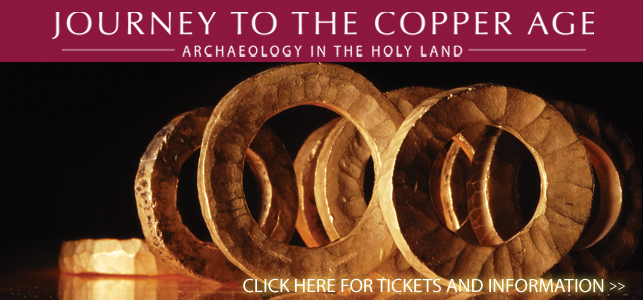
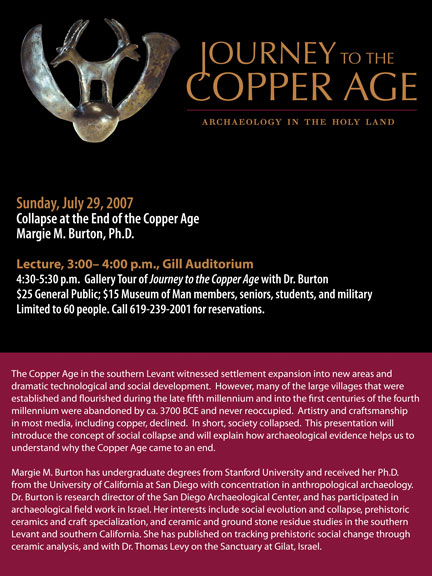
 The
foremost environmentally friendly packaging company, Bubbla,
seeks sales personnel throughout the three-state area to
demonstrate and sell its packaging systems. We offer sales
assistance, payment for pre-qualified customer demonstrations
and a high commission structure for independent representatives.
To find out more, email us at
The
foremost environmentally friendly packaging company, Bubbla,
seeks sales personnel throughout the three-state area to
demonstrate and sell its packaging systems. We offer sales
assistance, payment for pre-qualified customer demonstrations
and a high commission structure for independent representatives.
To find out more, email us at

 News Sleuths:
News Sleuths: 